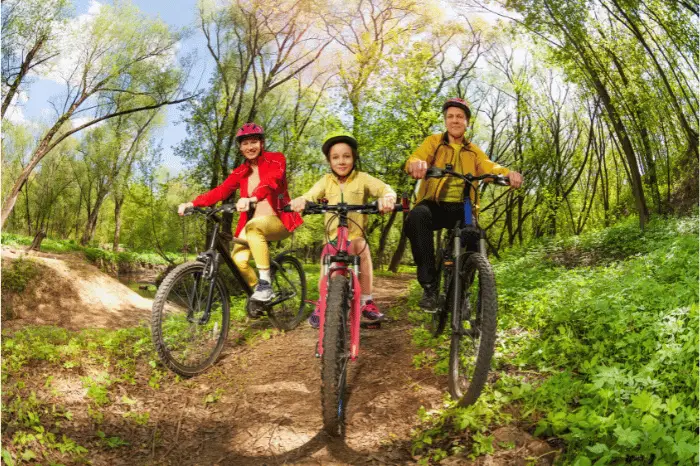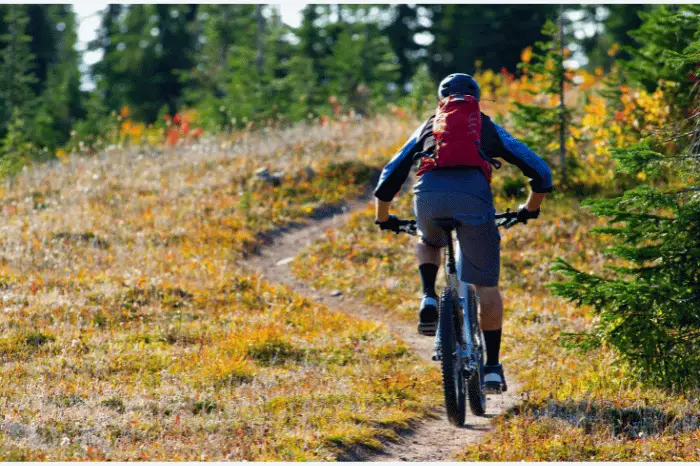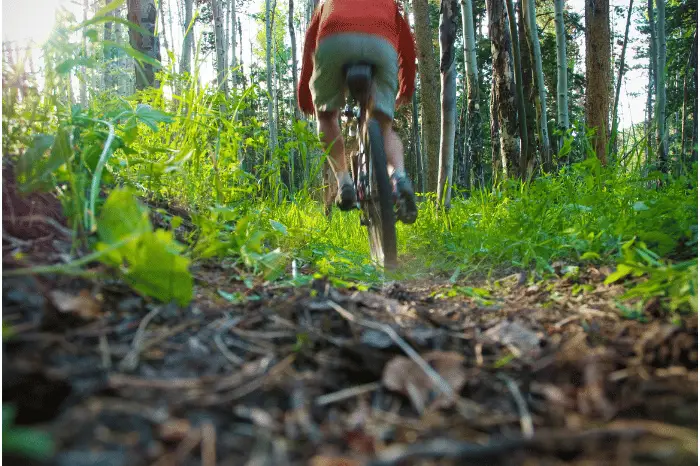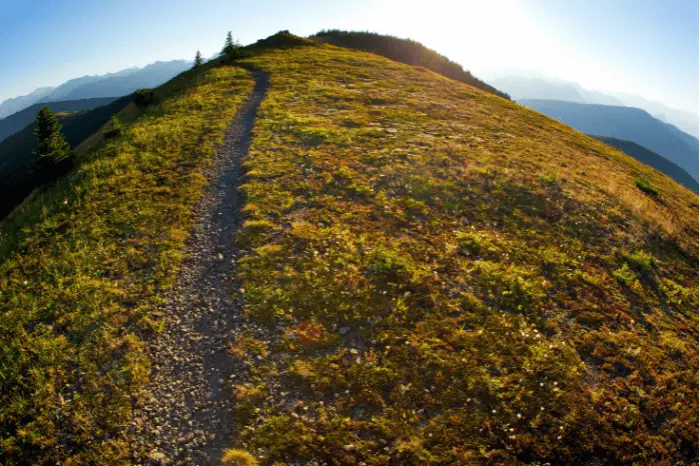
If you’re new to mountain biking, singletrack trails can be intimidating. But fear not, with the right skills and knowledge, you can conquer those trails in no time. Singletrack trails are narrow, winding paths that can range from beginner-friendly to expert-level. Riding on these trails requires a different set of skills compared to riding on wide-open trails or roads. In this article, we will discuss the essential skills you need to master to ride singletrack trails with confidence.
Understanding singletrack trails is the first step toward becoming a proficient mountain biker. Singletrack trails can be found in various terrains, from forests to mountains, and have different features such as rocks, roots, and berms. Knowing how to read the trail and anticipate what’s coming up ahead is crucial to riding safely and efficiently.
Bike handling skills such as balancing, braking, and shifting gears are also essential to navigate through the twists and turns of the trail. Mental preparation and focus are equally important to overcome the challenges that come with riding singletrack trails. In the following sections, we will dive deeper into each of these skills and provide you with tips and techniques to improve your mountain biking game.
Key Takeaways
- Understanding singletrack trails and their features is crucial to ride safely and efficiently.
- Mastering bike handling skills such as balancing, braking, and shifting gears is essential to navigate through the twists and turns of the trail.
- Mental preparation and focus are equally important to overcome the challenges that come with riding singletrack trails.
Understanding Singletrack Trails
If you’re new to mountain biking, you might be wondering what exactly is a singletrack trail. Simply put, a singletrack trail is a narrow path that winds through natural terrain. They are often found in forests, hills, and mountains, and can be quite challenging for beginners. Here are a few things you need to know about singletrack trails:

Trail Difficulty Ratings
Singletrack trails are usually rated according to their difficulty level. The International Mountain Bicycling Association (IMBA) has a rating system that ranges from green (easy) to black (extremely difficult). It’s important to know the difficulty level of a trail before you attempt to ride it. You don’t want to get in over your head and end up injuring yourself.
Trail Etiquette and Rules
When riding on singletrack trails, it’s important to follow certain rules and etiquette. Here are a few things to keep in mind:
- Yield to other riders: If you come across a rider going uphill, yield to them and let them pass. If you’re going uphill, yield to riders coming downhill.
- Stay on the trail: Don’t ride off the trail, as this can damage the surrounding vegetation and cause erosion.
- Don’t litter: Take your trash with you and dispose of it properly.
- Be aware of your surroundings: Keep an eye out for other riders, hikers, and wildlife.
By following these rules and being aware of your surroundings, you can help preserve the natural beauty of the trail and ensure that everyone has an enjoyable experience.
Essential Skills for Singletrack
If you’re new to mountain biking, singletrack trails can be intimidating. However, with the right skills, you can navigate through the narrow trails with ease. Here are some essential skills that every mountain biker should master before hitting the singletrack:
Body Positioning
Proper body positioning is crucial for maintaining balance and control on your bike. Keep your weight centered over the bike by bending your elbows and knees slightly while keeping your back straight. This will help you absorb shocks and maintain control on rough terrain. Keep your pedals level and centered to maintain stability.
Braking Techniques
Effective braking is crucial for navigating through singletrack trails. Learn how to use both your front and rear brakes to slow down and stop your bike. Practice modulating your braking force to avoid skidding or losing control. Remember to brake before entering corners, not during them.
Cornering Fundamentals
Cornering is a critical skill for navigating through singletrack trails. Approach corners with the right speed and lean your bike into the turn. Keep your inside pedal up and your outside pedal down to maintain balance. Look ahead to where you want to go and steer your bike in that direction.
Obstacle Navigation
Singletrack trails are filled with obstacles such as rocks, roots, and logs. Learn how to navigate through these obstacles by lifting your front wheel over them while keeping your back wheel on the ground. Practice bunny hopping to clear larger obstacles. Remember to approach obstacles at the right speed and maintain your balance and control.
By mastering these essential skills, you’ll be able to ride singletrack trails with confidence and ease. Practice these skills regularly, and you’ll soon become a skilled mountain biker.

Bike Handling Skills
If you’re new to singletrack trails, bike handling skills are essential for a safe and enjoyable ride. Here are some key skills to focus on:
Balance and Stability
Maintaining balance and stability on your bike is crucial for navigating technical terrain. Keep your weight centered over the bike, and use your core muscles to help stabilize your body. Practice riding slowly and smoothly over obstacles, keeping your pedals level and your body relaxed.
Climbing and Descending
Climbing and descending require different techniques. When climbing, shift your weight forward and keep your upper body relaxed to maintain traction. When descending, shift your weight back and lower your center of gravity to maintain control. Practice both techniques on a variety of terrain to build your skills.
Technical Terrain Handling
Technical terrain can be challenging, but with the right skills, you can navigate it with confidence. Look ahead to anticipate obstacles and choose the best line. Keep your weight centered over the bike, and use your arms and legs to absorb impacts. Practice riding over rocks, roots, and other obstacles to improve your skills.

Handling Corners and Berms
Cornering and berms can be tricky, but with the right technique, you can take them with speed and control. Look ahead to anticipate the turn, and lean your bike into the corner while keeping your body upright. Use your outside foot to apply pressure to the pedals and maintain traction. Practice on a variety of corners and berms to build your skills.
Hitting Jumps and Drops
Jumps and drops can be intimidating, but with the right approach, you can ride them with confidence. Approach the feature with speed and keep your weight centered over the bike. As you hit the jump or drop, push your bike forward and extend your arms and legs to absorb the impact. Practice on smaller features before working your way up to larger ones.
By focusing on these key bike handling skills, you’ll be able to ride singletrack trails with confidence and control. Remember to practice regularly and always ride within your limits.
Trail Reading and Anticipation
When you’re new to singletrack trails, it can be difficult to read the trail and anticipate what’s coming up next. However, with practice and experience, you can learn to read the trail and anticipate obstacles, allowing you to ride more confidently and smoothly.
Line Choice and Trail Features
One of the most important aspects of trail reading is choosing the right line. This means selecting the best path through a section of trail that will allow you to maintain your speed and momentum. When choosing a line, consider the trail features, such as rocks, roots, and drops, and how they will affect your speed and trajectory.
To help you choose the right line, it can be helpful to look ahead and scan the trail. This means looking at the trail features and obstacles ahead of you and anticipating how they will affect your ride. By scanning the trail ahead, you can make quick decisions about which line to take and adjust your speed and trajectory accordingly.
Adapting to Trail Conditions
Another important aspect of trail reading is adapting to trail conditions. This means adjusting your riding style to suit the terrain and weather conditions. For example, if the trail is wet and slippery, you may need to slow down and use more caution when riding over rocks and roots. Similarly, if the trail is dry and dusty, you may need to adjust your line to avoid loose dirt and gravel.
To adapt to trail conditions, it can be helpful to practice riding in a variety of terrain and weather conditions. This will help you develop the skills and experience necessary to adjust your riding style to suit the trail.
Overall, trail reading and anticipation are essential skills for new mountain bikers. By choosing the right line and adapting to trail conditions, you can ride more confidently and smoothly, making your singletrack experience more enjoyable.
Mental Preparation and Focus
When it comes to riding singletrack trails, mental preparation and focus are just as important as physical skills. Before hitting the trail, take some time to mentally prepare yourself for what you’re about to do. Visualize the trail in your mind and imagine yourself riding it with confidence and control. This can help you build confidence and reduce anxiety.
Here are some mental preparation techniques you can use:
- Breathing exercises: Deep breathing can help calm your nerves and focus your mind. Take a few deep breaths before hitting the trail and continue to breathe deeply throughout your ride.
- Positive self-talk: Use positive self-talk to build confidence and stay focused. Tell yourself that you can do it and that you’re capable of riding the trail with ease.
- Mindfulness: Stay present in the moment and focus on the trail ahead of you. Don’t let your mind wander or get distracted by outside thoughts.
- Visualization: As mentioned earlier, visualize yourself riding the trail with confidence and control. This can help you build confidence and reduce anxiety.
Remember, mental preparation and focus are just as important as physical skills when it comes to riding singletrack trails. Use these techniques to stay calm, confident, and focused on the trail ahead.
Joining the MTB Community
If you’re new to mountain biking, joining the MTB community can be a great way to learn new skills, meet like-minded people, and stay motivated. Here are a few tips to help you get started.
Local Groups and Trail Associations
One of the best ways to get involved in the MTB community is to join a local group or trail association. These groups often organize group rides, trail maintenance days, and other events that can help you get more involved in the sport. To find a local group or trail association near you, check out websites like Singletracks, MTB Project, or Trailforks.
Group Ride Etiquette
If you’re planning on joining a group ride, there are a few things you should keep in mind to make sure you have a good experience and don’t disrupt the group. Here are some tips:
- Be on time: Make sure you arrive at the meeting spot on time so that the group doesn’t have to wait for you.
- Bring the right gear: Make sure you bring all the gear you need for the ride, including water, snacks, and any tools or spare parts you might need.
- Be respectful: Be respectful of other riders in the group, and don’t ride too close or cut in front of others.
- Follow the leader: Follow the leader’s instructions and stay on the designated trail. Don’t try to show off or take unnecessary risks.
- Be prepared to help: If someone in the group has a mechanical issue or gets hurt, be prepared to help out and offer assistance.
By following these tips, you can have a great time on your first group ride and start to feel like a part of the MTB community.
